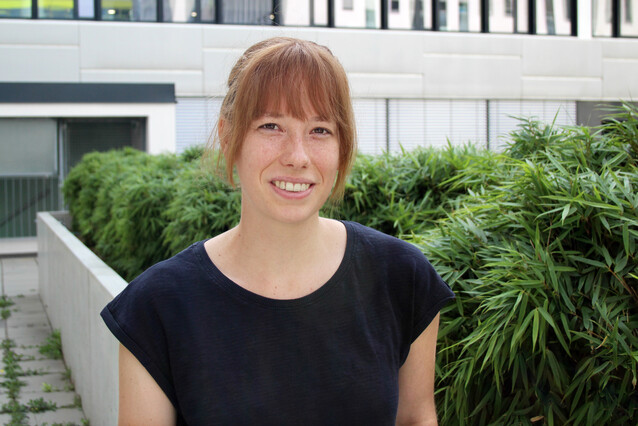This way please – how a signalling molecule guides embryonic cells in early development
From the beginning of an embryo’s development, its cells must move and organise as they differentiate into specific cell types. How do they “know” where to move? Scientists in the lab of Andrea (Andi) Pauli at the IMP and Edouard Hannezo at ISTA have found how the small protein ‘Toddler’ dictates the migration of a layer of cells during gastrulation, a crucial step in early development. Jessica Stock, first author and recent graduate from the Vienna BioCenter PhD Program, tells us more about their findings, now published in the journal Science Advances.
What is gastrulation?
It’s one of the first key events during the development of an embryo. Right after fertilisation, the cell that results from the fusion of egg and sperm starts to divide into a uniform mass of undifferentiated cells that essentially have the potential to become any body part. Gastrulation is the time where this mass of cells is first specified and separated into three distinct layers. The cells differentiate and then migrate to organise the future body plan and to launch the next steps in development.
Gastrulation happens in most animal embryos. What is left to discover about it?
The stages of gastrulation are very similar between species, and they have been studied extensively. We know what the general cell movements are, which cells become what, and which molecules are involved in differentiation and migration. What we don’t know is how these factors act to guide the cell differentiation and movements that we see.
How did you address this question in your study?
We focused on cell migration, in particular in one of the three layers of cells: the mesoderm. We had a very nice entry point: when Andi worked as a postdoc on zebrafish embryos, she discovered a small protein called ‘Toddler’, which was crucial for mesodermal cells to move properly. What we still needed to find out was how it operates. That was the goal of my PhD and some of my results are in this new study.
Was there a memorable moment of discovery in your project?
A game-changing moment was when we pinpointed Toddler as a chemokine signal. These molecules are usually secreted from a localised source and diffuse through the tissue, diluted more and more as the distance from the source increases. Cells can detect the signal and migrate towards its source, from a low concentration of the chemokine to higher concentrations. Initially, we thought Toddler couldn’t be a chemokine signal: we had run experiments where we had added Toddlerat different positions in the zebrafish embryo, first in front of mesodermal cells, then also in the back, and that – to our surprise – didn’t change the direction of mesodermal cell migration: cells didn’t seem to mind our artificial concentration gradient as long as they had some Toddler available. When we analysed the expression of toddler mRNA throughout a normal zebrafish embryo, we realised that it was uniform – there was no detectable gradient in RNA expression! That was very puzzling.
So how does Toddler work?
We found that Toddler is a chemokine signal that works in an unusual manner. Mesodermal cells – those that have to migrate – self-generate the Toddler concentration gradient that they need to find their way. They carry special receptors in their membranes that detect and take up Toddler in their local surrounding. Importantly, these receptors are also responsible to detect this concentration gradient. In simple words, they eat up Toddler molecules around them, decrease the local concentration, and move towards higher concentrations.
Before gastrulation, the embryo sits on top of a large yolk, and mesodermal cells expressing the receptor arise at the boundary between embryo and yolk. Because the cells that express the receptor are specified only at this specific location, Toddler will only be ‘eaten up’ locally at this end of the embryo but not on the other end. This creates a Toddler gradient throughout the embryo, which will direct mesodermal cells to migrate to the future head of the embryo with higher Toddler levels.
What’s the next step in your career?
I will keep exploring my passion for developmental biology, as a postdoc at the Marine Biological Laboratory in Woods Hole in the United States. I will switch model organisms: I’ll be investigating the development of the nervous system in octopus and squid. They are probably the most intelligent invertebrates, with the largest nervous system – I think that we have long overlooked their potential as a model organism.
Original publication
